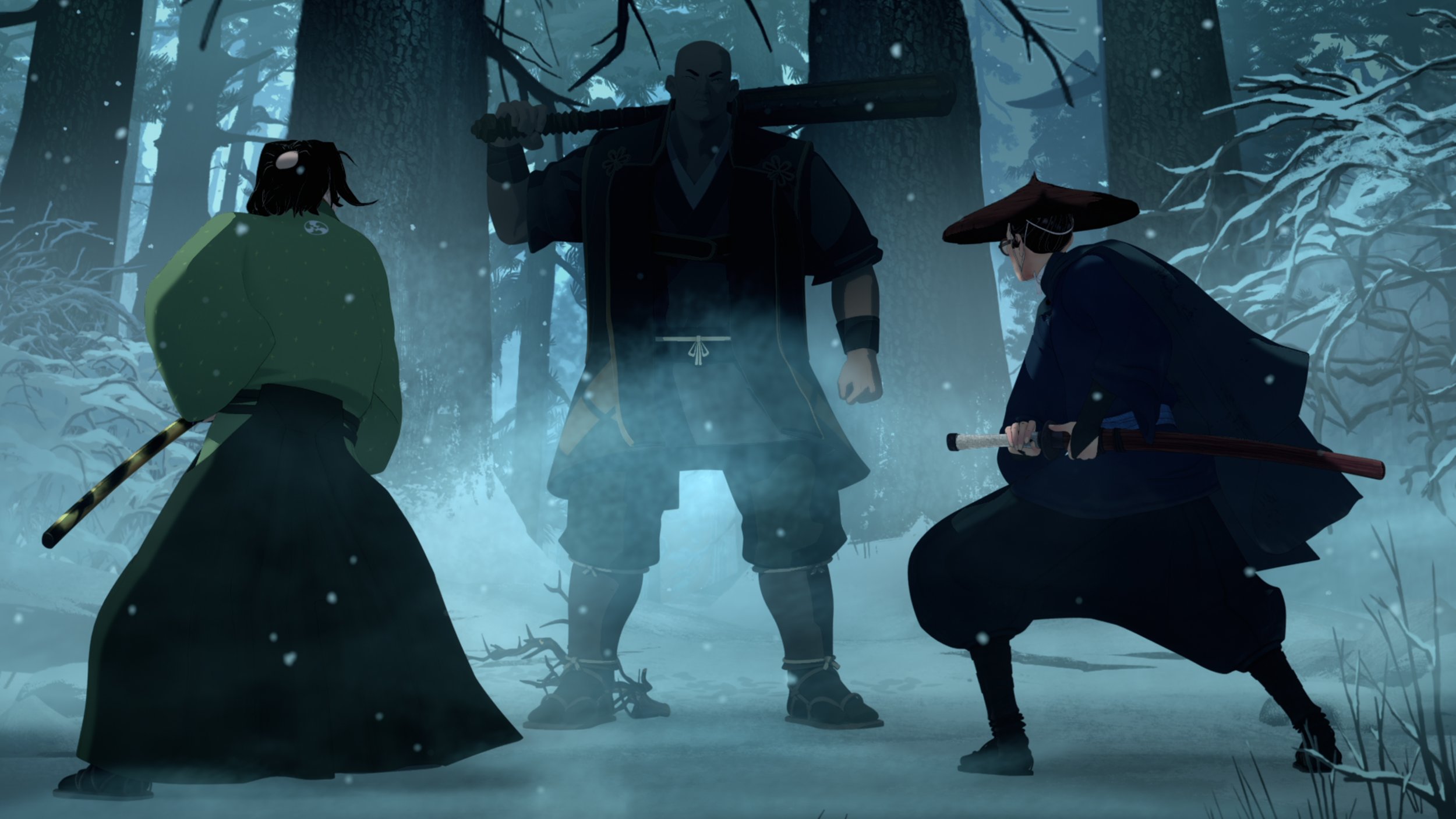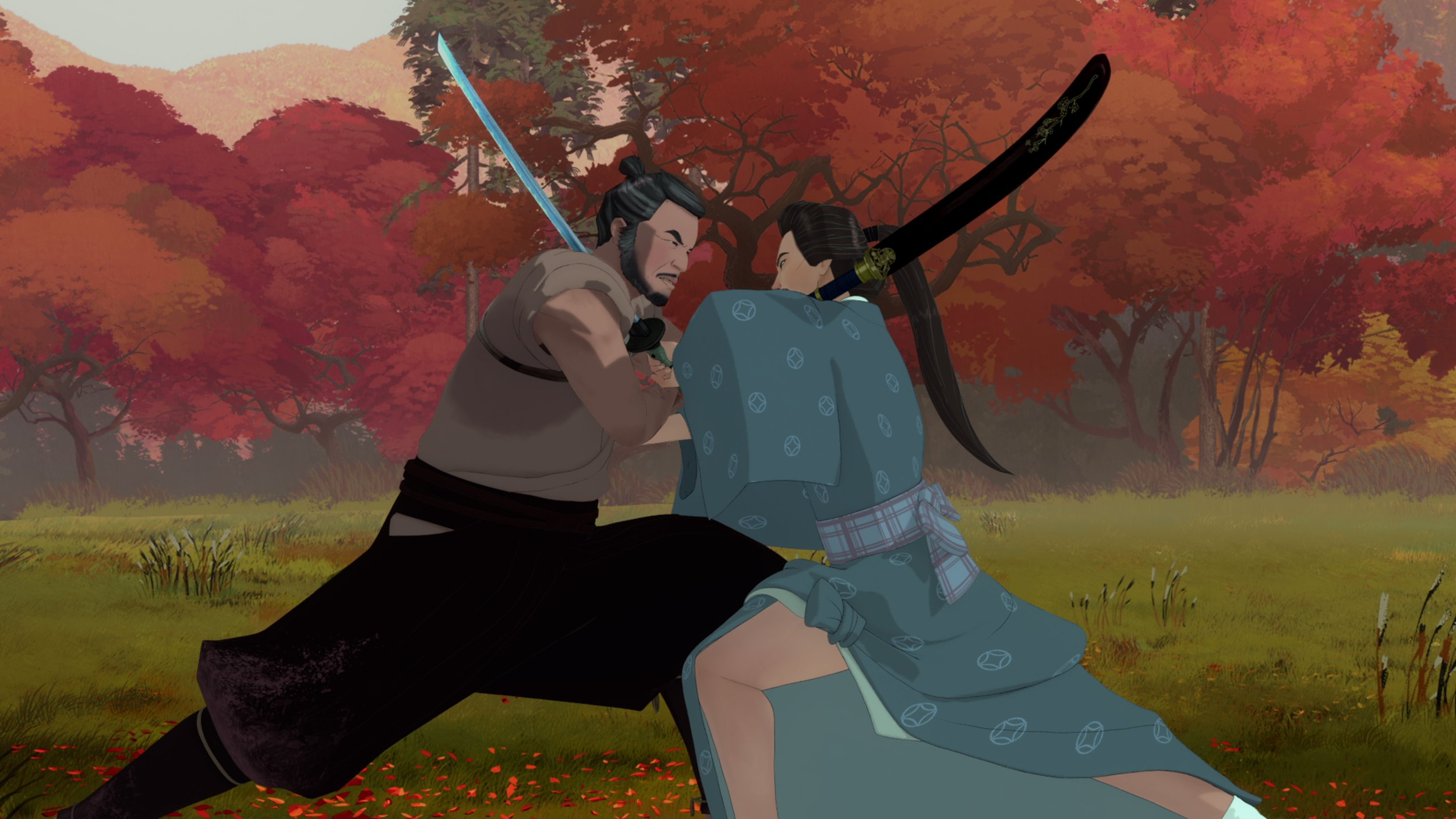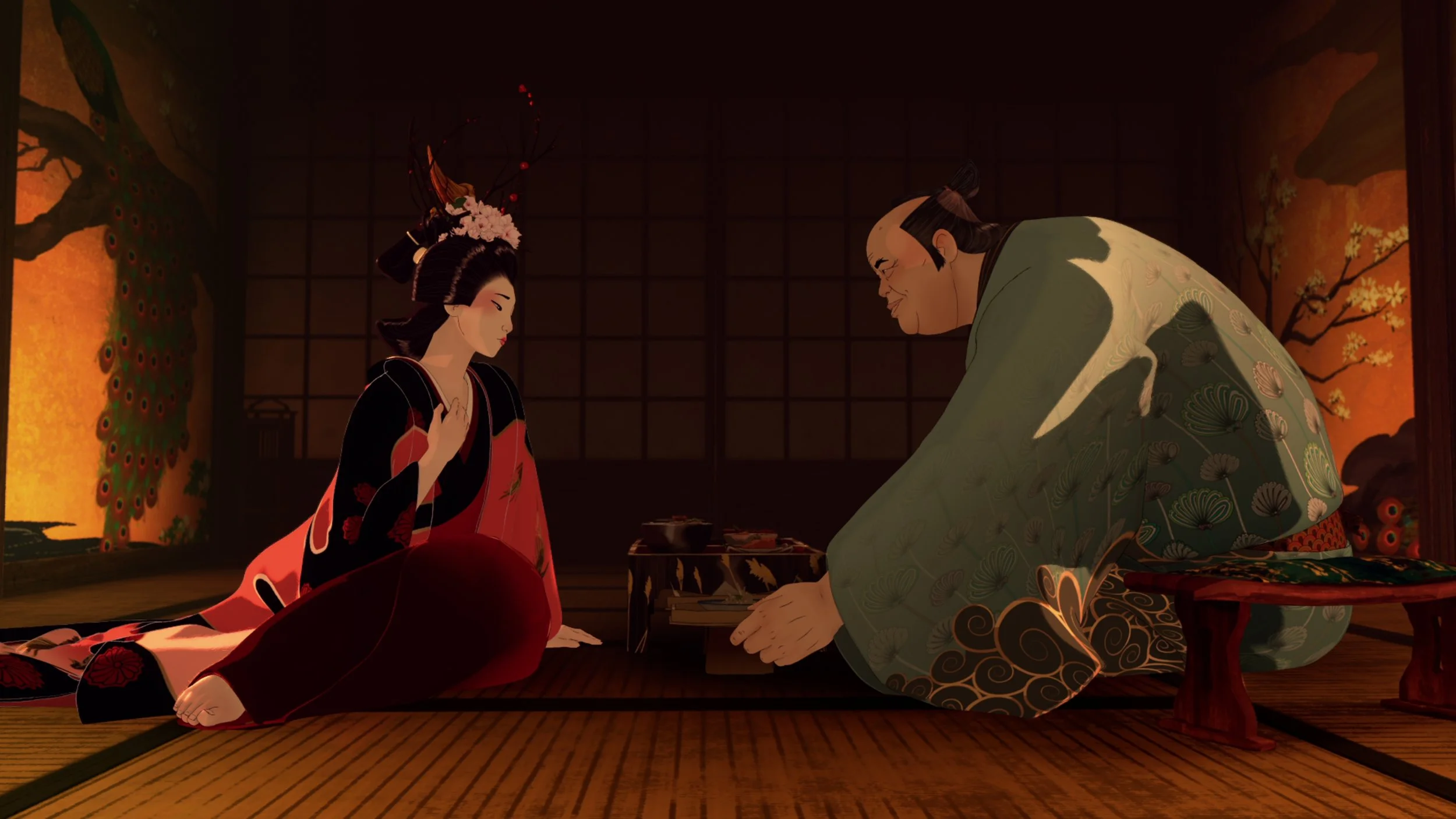Blue Eye Samurai [Review]
Image: Netflix
Netflix’s eight episode first season of Blue Eye Samurai is a bloody, Edo-period samurai revenge rollercoaster. Co-creator Amber Noizumi describes the show as “Kill Bill meets Yentl,” and she’s right on the money. Noizumi created the show with husband Michael Green, writer of Logan and Blade Runner 2049. Both of them serve as executive producers and writers on the show, and had been developing this concept for 15 years.
Blue Eye Samurai takes place in 17th century Japan during a time when the country’s borders were closed to foreigners and Western influence. Mizu (Maya Erskine) has blue eyes, a rarity in Edo-period Japan. This makes her an outcast; she faces horrible treatment and discrimination for being of mixed race. She sets off on a quest for revenge, vowing to kill the four white men known to be in Japan at the time of her conception, one of whom is her father. Revenge, bushido, and even unaccompanied travel are not options for women, so she must hide her gender as well as her blue eyes.
Image: Netflix
The supporting cast includes apprentice Ringo (Masi Oka), the Swordmaker (Cary-Hiroyuki Tagawa), rival Taigen (Darren Barnet), foil Princess Akemi (Brenda Song), Akemi’s chaperone Seki (George Takei), Madame Kaji (Ming-Na Wen), and villains Heiji Shindo (Randall Park) and Abijah Fowler (Kenneth Branagh). Every member of the cast delivers a great performance.
The story is suspenseful, affecting and full of action. Each individual character’s arc is excellently realized; they all have emotional depth with well fleshed out relationships and clear growth. Each decision they make is consequential, and every beat of the show is driven by character motivation rather than simple plotting. Seeing an animated show that’s so evocative is a rarity. We’re truly blessed to have shows like Pluto and Blue Eye Samurai come out in such close proximity. Noizumi and Green’s writing reaches or even surpasses the level of Green’s previous work on Logan and Blade Runner 2049.
Part and parcel with the performances and writing are Blue Eye Samurai’s visuals. This is the best looking 3D animation I’ve seen styling itself as traditional 2D animation. Beyond the masterful use of this effect, the animation is beautiful and feels handcrafted, with a unique textured look. The expressive character designs brim with personality. After witnessing a duel where the winner kills with a single stroke, Mizu muses about how this move, “the Painter’s Signature,” was performed “immaculate.” I couldn’t help but think about the show’s visuals during this scene. Supervising Director-Producer Jane Wu has done incredible work here.
Image: Netflix
The action and fights are realized flawlessly, each of these sequences a fluid ballet of violence that paints the screen red. The fights feel physically grounded; the action has weight. It made total sense when I learned that they were choreographed by a stunt coordinator with a stuntvis on-camera. Consideration was given to emotional beats driving the action, and it shows.
Blue Eye Samurai is also unapologetically adult. This isn’t a cartoon—it’s an animated drama. It deals with themes of race, gender, class, disability, and power in a mature, nuanced way. The show reflects an attitude of frankness about sex reflecting Edo-period Japan, including it as part of the world, plot, and character relationships. This comes with on-screen nudity, none of which is presented in a salacious way. Just as Blue Eye Samurai doesn’t pull its punches with sex, the show’s camera never shies away from the unflinching graphic violence. To me, these things are refreshing to see done so well and so maturely in an animated show, to see an American production that sees animation as a medium rather than a genre, but it’s definitely not for young audiences.
I don’t have anything negative to say about Blue Eye Samurai. The show floored me. Netflix better renew this one.




